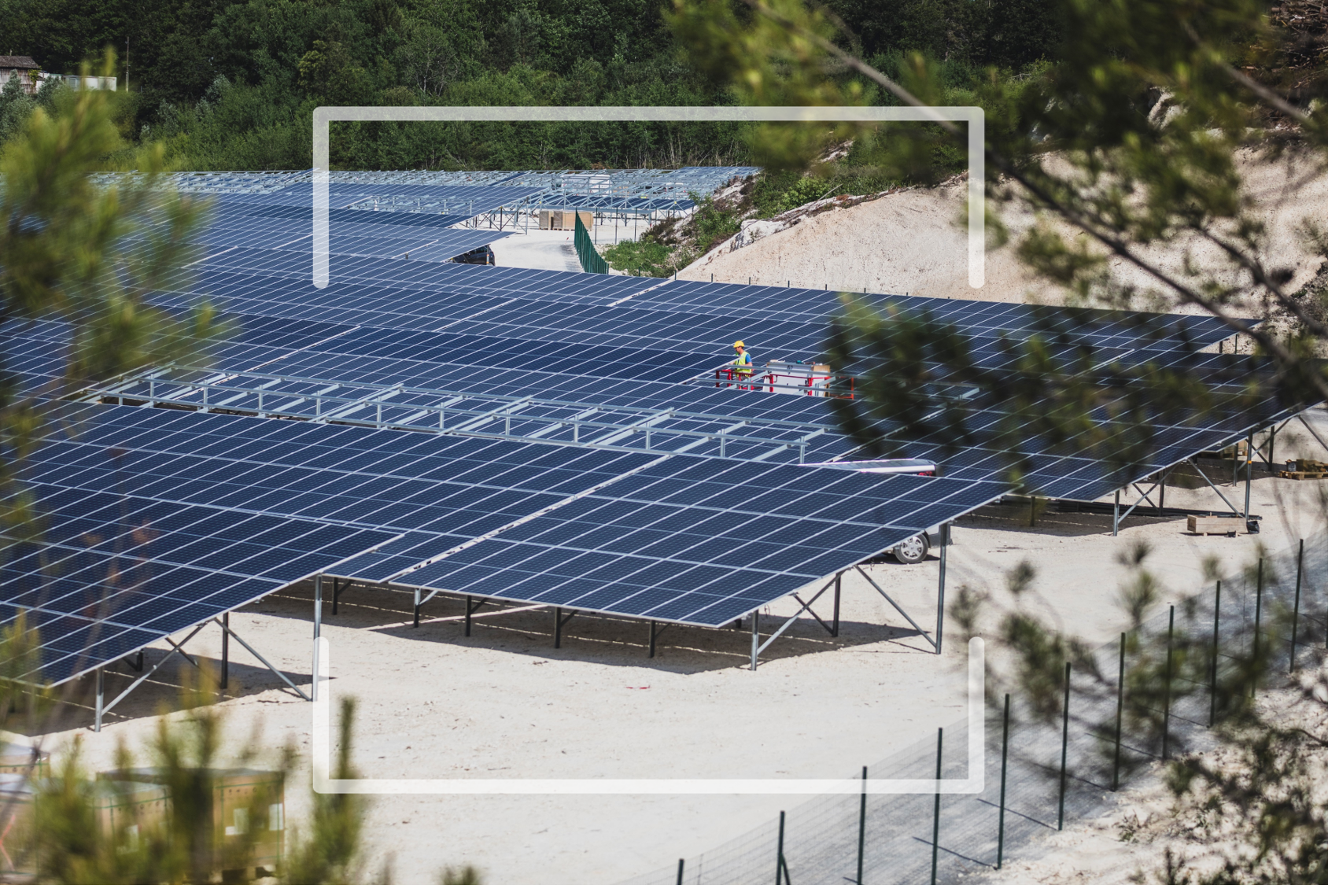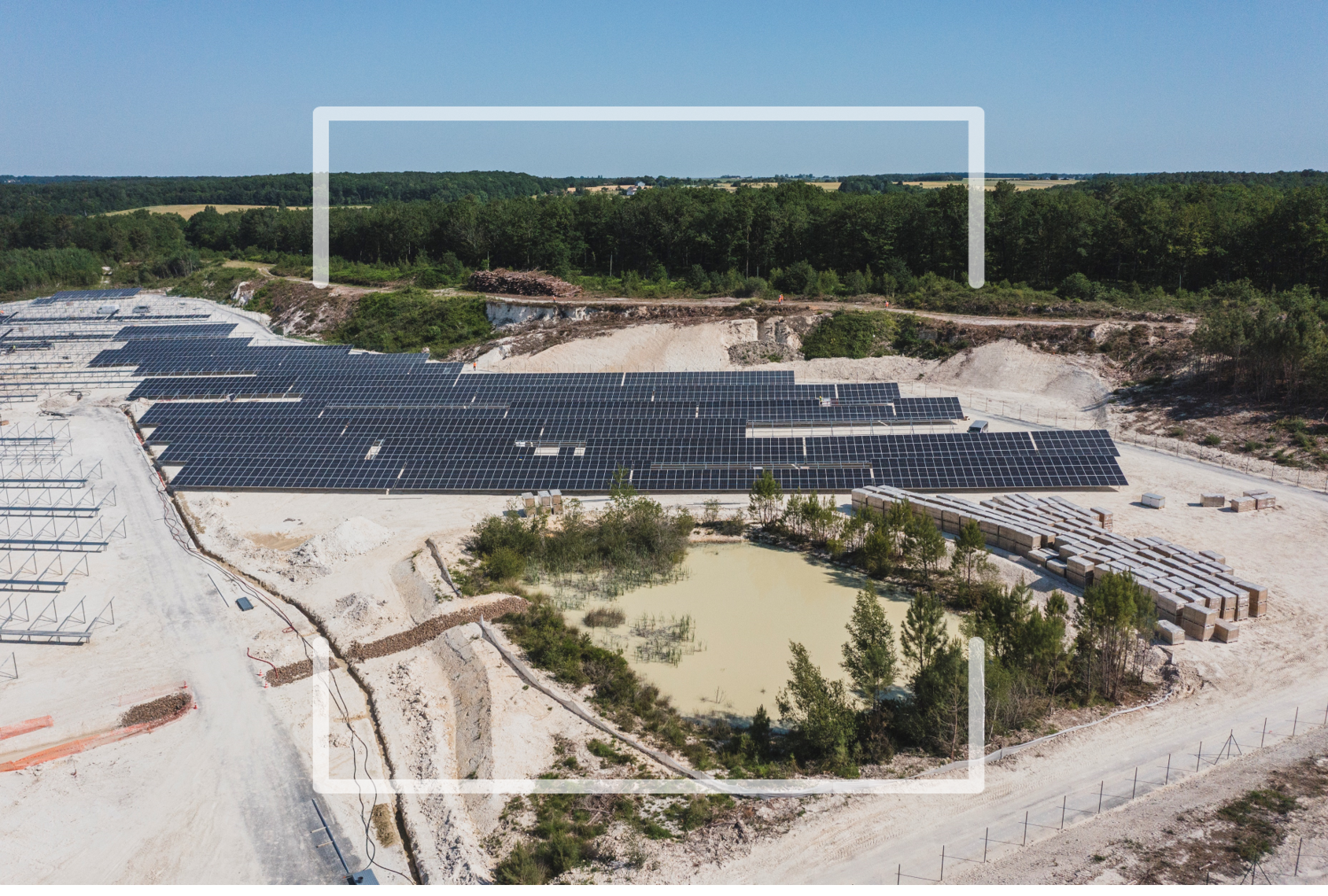Episode1: Upgrading degraded land through renewable energy production

On 28 September 2021, Neoen's teams, together with those of Omexom in France, inaugurated the Paulmy photovoltaic power plant, a solar power plant built on a degraded land. By participating in the construction of this plant, Omexom is contributing to the enhancement of the area by giving a second life to a degraded site. Let's take a look at the story of this project! This is the first episode of the Omexom Green Story!

Upgrading degraded sites
Today in France, the share of solar power represents only 12.6 GW of installed capacity. Despite a 9% increase in the first half of the year, France is still “behind” its neighbours.
To accelerate the development of solar energy in France, the Energy Regulation Commission is encouraging the conversion of so-called degraded sites, in particular quarries whose concession periods are coming to an end or that have been abandoned.
Promoting the development of ground-mounted power plants on degraded sites also helps to avoid conflicts of use, particularly with agricultural land.
According to ADEME, abandoned areas represent a potential of 53 GWp.
Thus, the use of derelict sites is a boon for the growth of renewable energy.
“Solar represents 3.1% of electricity demand in France, up 3% on the previous year”.
The SER*
A photovoltaic plant built on a former clay quarry
In Paulmy, Omexom was commissioned by Neoen to build a solar photovoltaic power plant on a former clay quarry. With a total surface area of approximately 20 hectares, this is also the second photovoltaic power plant in the Centre-Val de Loire region.
Why Paulmy? Because the town gets 1,860 hours of sunshine per year, making it a privileged location.

On this project, Omexom is involved in the entire construction process of the power plant: from its design to its commissioning, as well as its operation and maintenance over the next 20 years.
The Omexom teams installed 26,000 panels representing 11.7 MWp of photovoltaic power to produce electricity for 3,500 households. All in all, the work lasted eight months.
The biggest challenge for this plant? Constructing a site suitable for building a solar power plant. This means qualifying the materials in place to create a method of implementation in cut and fill in order to create a site that is compatible with the implementation of pile-driving type foundations.
“The transformation of former quarries into power stations producing renewable energy helps to enhance the value of degraded land by giving it a new, greener life.”
Daguin Yves
Business Unit Manager Omexom in France

Focus on biodiversity
Many species have settled on these degraded sites. Preserving natural environments is one of the priorities of VINCI’s environmental ambition. Thus, for each project, the objective is to reduce as much as possible the impact on natural environments and to develop solutions to preserve resources and promote ecological renaturation.
At Paulmy, in order to avoid impacts on the surrounding environment, a green and blue corridor was drawn up to identify all the issues and measures to be taken.
Indeed, 53 bird species were identified on site, including 43 protected species and 4 listed in Annex I of the Birds Directive.
Thus, the establishment and conservation of suitable young plantations for the reproduction of these species was one of the environmental concerns in the implementation of this project.
In addition, the conservation of the 7 ponds within the power plant to accommodate the 7 species of amphibians, which are strictly protected at national level, contributed to the conservation and preservation of biodiversity on site.
By participating in the construction of this power plant, Omexom is contributing to the enhancement of the area by giving a second life to a degraded site.
*SER (Syndicat des Energies Renouvelables): Union of Renewable Energies
